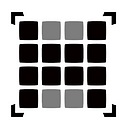Component Fight Club, a Love Story
Here we go, talking about my favorite net — the ground — again. The ground net stands alone as the most important.
Part One covered single ended transmission lines (analog) and Part Two dealt with differential pairs (digital). This part (three) will deal with the coexistence of the two. The experts in this field refer to themselves as Signal Integrity Engineers and “desense” is their game. It’s a two pronged approach.
One: We want less noise from the digital realm!
Two: We want more immunity from remaining noise at the receiver antenna(s) on the analog section(s) or wherever noise is picked up and spread around.
The most effective coexistence enabler is space. That’s also the one thing we usually don’t have, which makes this a tricky problem. Isolating the noisy digital ground domain from the analog victim’s ground domain is a common tactic. They’re often tied back together in a single location.
The most difficult implementation I’ve had to do was using full planes of the same net but creating clearances (voiding) for certain ground vias on two layers and voiding all of the other ground vias and pins on the other layers. A geographical approach with islands of ground in confined areas is preferable as far as implementation goes.
That isolation can be defined with a slot in the ground plane that wraps around the noise with one outlet back to the main ground. It could also be a resistor or ferrite bead or something that allows for connecting or separating the two domains on the outer layers as needed. Depending on your system, capturing the design intent for verification purposes can be harder than actually doing all of the layout work.
Good shielding makes good neighbors.
The best isolation is a Faraday cage for each functional neighborhood. In some cases, a single shield can be further separated into pockets for various functions. Figure 1 shows a 3x2 MIMO radio set with the baseband not shown but located off to the left. While the sheetmetal benders can obviously handle the odd shapes and multiple chambers, it’s a definite cost savings to use four sides with 90 degree corners. It comes as no surprise that the width of the landing area for the shield frame has gotten narrower over time. Two and a half millimeters has incrementally become one mm as we press the vendors to increase precision. Taking it to the next level, we can get metal plating to stick to injection molded plastic so we can build the shields right into the housing for further integration. Smaller, faster, lighter, cooler, more!
The wall itself rests on footprint that can represent the entire perimeter of the shielded area or a series of oblong pads as shown in Figure 2 that could potentially allow a trace to pass under the shield on the outer layer of the PCB. The gap in the footprint would align with a so-called mouse-hole in the shield wall for that purpose. Referring back to Figure 1, we can see where a continuous perimeter can be broken to allow traces to escape to the connectors.
The other option is to burrow under the wall on an inner layer. Often, the signal path that requires the shielding in the first pace isn’t the kind to want to via down from the surface.
Another approach to creating shield walls are these little RF shield clips from Harwin (Figure 3) and others. They also have a few standard lids that slide into the clips but often, it’s a fold-your-own solution. I’ve used four corners and two straight clips on a prototype board to allow a custom bent shield to be installed if it was found to be necessary. The six footprints took some board space which turned out to be enough isolation for that purpose.
Mobile devices and the Internet of Things (IoT) are two areas where analog and digital signals compete for board space. My first article about the Chromecast product was one of many such examples. Digital HDMI noise wants to bleed all over the 2.4GHz WIFI.
Setting aside the connectors, the LED and the reset button, the only thing to be placed outside of the shielded area is the printed antenna. It’s guarded by rows of vias in the lower right-hand side of the device. The location is as far away from the HDMI connector as possible on this thumb-sized form factor.
Meanwhile, the switching power supply is at the top of the circle with the radio in between. The baseband device is on the left and the other side of the board is mostly DDR and flash memory chips in their own shields.
When it all comes together, it looks like we knew what we were doing all along. Just as likely is that we found out along the way that a tiny shift in the antenna geometry created a large impact that wasn’t surfaced in the original simulations. Getting coexistence right will take some back and forth between the RF, SIPI, mechanical and layout teams.
Mixed signal tech is here to stay so jump in with both feet.

